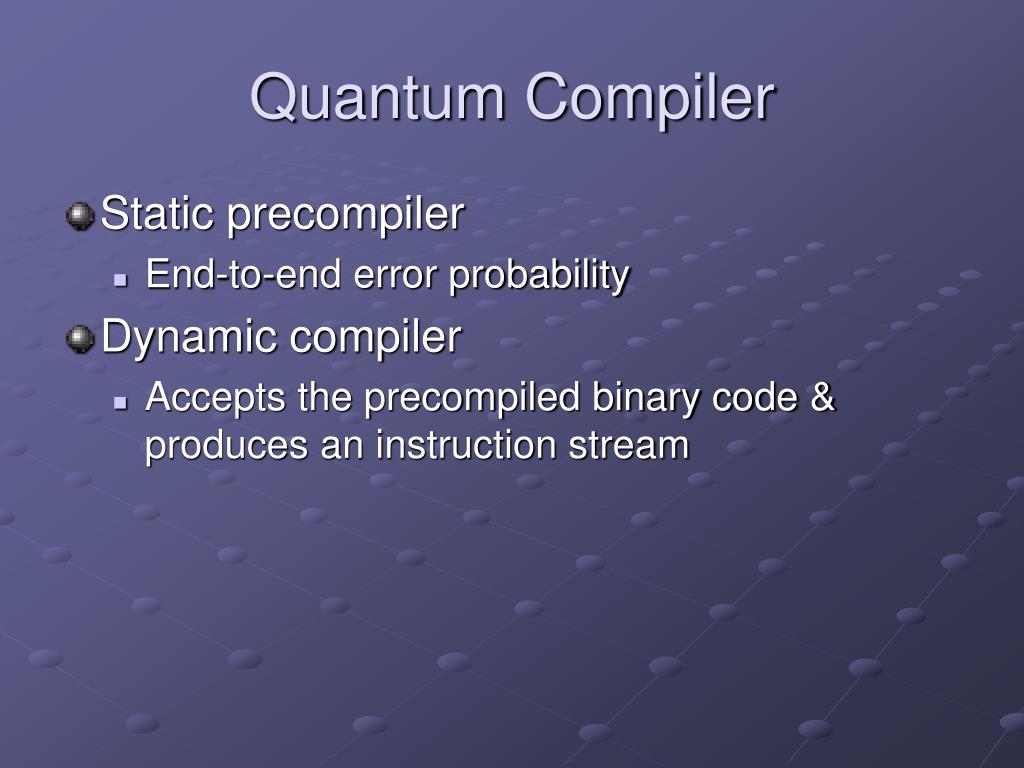

By adopting this method, because the remaining errors which cannot be eliminated by QEC can be compensated by QEM, we can reduce the redundancy of physical qubits required for QEC, leading to the significant reduction of required computing resources.įig. Since the modifications of the information processing of classical computers are much easier than that on quantum computers, the dual error reduction method can be implemented with low overheads. In this research, we employed probabilistic error cancellation method as a QEM method, which allows for efficient reduction of noise only by slightly changing the information processing of classical computers for QEC. Thus, it was highly non-trivial whether we can achieve a good balance between QEC and QEM. While QEM usually requires additional operations on quantum computers, implementable operations on an encoded space when using QEC are quite restricted. The key of this research is the dual error reduction structure, where easy-to-implement QEC first suppresses the error-subsequently, QEM removes the remaining errors (Fig. This method is expected to hasten the arrival of practical quantum computing, as well as unravel the new direction of research for fault-tolerant quantum computing, where the hybridization of error reduction techniques plays the crucial role. In this research, the reduction of necessary physical qubits up to 80 percent is also reported. Outline of our methodĪ research team in NTT has successfully integrated QEM and QEC, which have been independently investigated from distinct scenarios, and proposed a hybrid quantum error reduction method for dramatically improving computation accuracy in medium-scale quantum computing. For this reason, QEM has been considered unavailable for medium or large-size quantum computers.īecause QEC is only useful for large-size quantum computers while applicable scales of quantum computers for QEM is restricted, efficient error reduction technique for medium-scale quantum computers has been missing therefore, it has been believed that the realization of practical quantum computing is beyond reach. However, the statistical uncertainty of the estimated outcomes becomes prohibitively large when the number of errors during quantum computation increases.

Therefore, QEM is a suitable error reduction technology for small-size current quantum computers. The alternative method for error suppression is QEM, which relies on statistical methods to estimate the correct outcomes from the noise-free quantum computers accordingly, it does not require encoding of qubits, implying hardware overhead is low.
#Types of quantum error code
Although QEC can suppress computation errors to an arbitrary level by using a large code size, it is evaluated that as many as 10 millions of physical qubits are required for practical applications - this seems decades away. QEC can correct computation errors by detecting errors and adaptively correcting them, by representing logical qubits with redundant physical qubits. There are two distinct types of error suppression technologies: quantum error correction (QEC) and quantum error mitigation (QEM). Since superposition states are quite fragile against environmental noise, the biggest challenge towards the realization of quantum computers is the suppression of noise and the improvement of computation accuracy. Because quantum computing may solve prime number factorization and simulate chemical materials much more efficiently than classical computers, it has been extensively studied over the globe. Quantum computing is a new paradigm that performs computation by exploiting "qubits", which have unique properties of quantum mechanics such as superposition and quantum entanglement. This novel method allows for the reduction of the size of quantum computers required for practical applications by up to 80%. Researchers at Nippon Telegraph and Telephone Corporation (NTT head office: Chiyoda-ku, Tokyo president: Jun Sawada hereinafter "NTT"), in collaboration with the Center for Quantum Information and Quantum Biology, Osaka University (QIQB), have proposed a hybrid quantum error reduction technique, consisting of quantum error correction and quantum error mitigation.


 0 kommentar(er)
0 kommentar(er)
